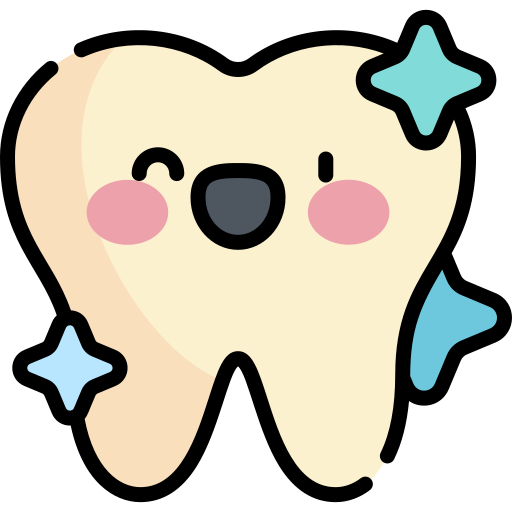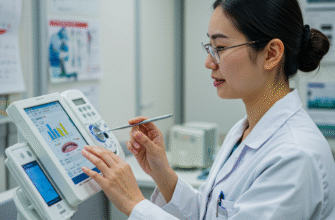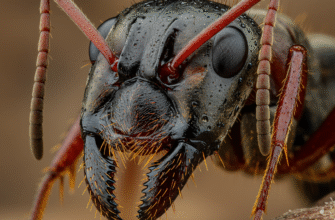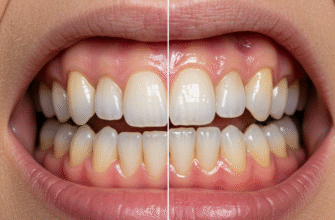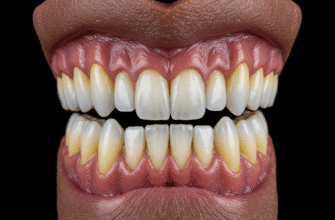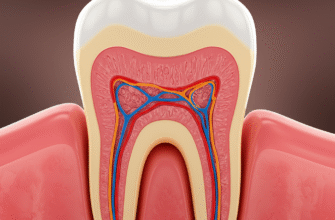The world of dentistry, often associated with drills and fillings, is on the cusp of a remarkable transformation. Imagine a future where lost teeth could be regrown, damaged gums fully restored, and dental implants placed with even greater success thanks to the body’s own healing power. This isn’t science fiction; it’s the burgeoning field of regenerative dentistry, with stem cells playing a leading role. These microscopic powerhouses are unlocking doors to therapies that could fundamentally change how we approach dental and oral health.
Understanding the Basics: What Are Stem Cells?
Before diving into their dental applications, let’s briefly understand what makes stem cells so special. Think of them as the body’s master cells, unspecialized cells that possess two incredible abilities. Firstly, they can divide and renew themselves for long periods. Secondly, under specific conditions, they can differentiate, or transform, into specialized cells with specific functions – such as muscle cells, brain cells, or, crucially for dentistry, the cells that make up teeth and their supporting structures. It’s this chameleon-like quality that makes them so valuable for repairing and regenerating damaged tissues.
There are different types of stem cells, but for regenerative medicine, scientists are particularly interested in adult stem cells (also known as somatic stem cells). These are found in various mature tissues throughout the body, acting as an internal repair system, replenishing specialized cells as needed. The exciting news for dentistry is that our mouths are a surprisingly rich reservoir of these adult stem cells.
Dental Tissues: A Surprising Source of Power
For many years, the most commonly discussed stem cells were those from bone marrow or umbilical cord blood. However, research has revealed that several types of potent stem cells reside right within our oral cavity. These are often referred to as dental stem cells, and they hold immense promise for targeted dental therapies. Their accessibility and the fact that they are already “programmed” for a dental environment make them particularly attractive candidates for future treatments.
Where Do We Find These Dental Stem Cells?
Scientists have successfully isolated and characterized stem cells from various dental tissues, each with unique properties and potential applications:
- Dental Pulp Stem Cells (DPSCs): Found in the soft pulp tissue at the center of a healthy adult tooth. These are perhaps the most studied dental stem cells and have shown the ability to form dentin, the hard tissue beneath the enamel.
- Stem Cells from Human Exfoliated Deciduous Teeth (SHED): These are harvested from the pulp of baby teeth that naturally fall out. SHED are known for their high proliferation rate and ability to differentiate into a variety of cell types, including bone and nerve cells, not just dental tissues. This makes them particularly versatile.
- Periodontal Ligament Stem Cells (PDLSCs): Located in the periodontal ligament, the connective tissue fibers that anchor teeth to the jawbone. These cells are crucial for maintaining tooth stability and are key players in potential therapies for gum disease.
- Stem Cells from Apical Papilla (SCAP): Found at the tip of developing tooth roots in permanent teeth that haven’t fully matured. They are involved in root formation and show significant regenerative potential.
- Dental Follicle Progenitor Cells (DFPCs): Isolated from the dental follicle, a sac-like structure surrounding a developing tooth before it erupts. These cells contribute to the formation of cementum, periodontal ligament, and alveolar bone.
Dental stem cells are a type of adult stem cell found within teeth and surrounding oral tissues. They are multipotent, meaning they can differentiate into various cell types that make up dental and supporting structures. Their discovery has opened new avenues for research into regenerative dental therapies, offering the potential to repair or replace damaged oral tissues using the body’s own cells.
Rebuilding Smiles: Potential Applications in Dentistry
The ability of dental stem cells to form various oral tissues opens up a spectrum of exciting therapeutic possibilities. While most of these are still in the research and early clinical trial stages, the progress is tangible and points towards a future where dental treatments are more about regeneration than just replacement or repair.
The Dream of Whole Tooth Regeneration
Losing a tooth, whether due to decay, injury, or gum disease, has long meant relying on artificial replacements like dentures, bridges, or implants. But what if we could grow a brand new, biologically identical tooth? This is one of the most ambitious goals of stem cell-based dental therapy. Researchers are exploring strategies that involve seeding stem cells onto a biodegradable scaffold shaped like a tooth, along with growth factors that guide their development. The idea is to mimic the natural process of tooth formation.
Early studies in animal models have shown promising results, with the formation of tooth-like structures complete with pulp, dentin, enamel, and even root systems that integrate with the jawbone. However, replicating the complex structure, exact size, and precise positioning of a human tooth is an enormous challenge. It involves orchestrating the interaction of multiple cell types and signaling pathways. While we are not yet at the stage of growing a new molar in a dental clinic, the foundational research is paving the way for future breakthroughs. It’s more likely that initial applications might involve regenerating parts of a tooth, like the dentin-pulp complex, to save a damaged tooth rather than replacing it whole.
Healing Gums and Supporting Structures: Periodontal Regeneration
Periodontal (gum) disease is a common ailment that, in its severe forms, can lead to the destruction of the gums, periodontal ligament, and the alveolar bone that supports the teeth, ultimately causing tooth loss. Current treatments aim to halt the progression of the disease and manage symptoms, but fully regenerating the lost tissues has been a significant hurdle.
This is where periodontal ligament stem cells (PDLSCs) and other dental stem cells come into play. Scientists are investigating their potential to regenerate all the components of the periodontium. The approach often involves applying these stem cells, sometimes in combination with scaffolds and growth factors, directly to the affected areas. The hope is that these cells will differentiate into new ligament fibers, cementum (the layer covering the tooth root), and alveolar bone, effectively rebuilding the tooth’s natural support system. Pre-clinical studies have demonstrated successful regeneration of periodontal tissues in animal models, and some early-phase human trials are underway, offering a glimmer of hope for a more comprehensive treatment for this widespread condition.
Stronger Foundations: Bone Regeneration
Adequate jawbone volume and density are critical for the success of dental implants and for overall oral health. Bone loss can occur due to tooth extraction, trauma, periodontal disease, or developmental issues. Current bone grafting techniques often use bone from the patient’s own body, a donor, or synthetic materials, each with its own limitations.
Stem cells, particularly those derived from dental pulp or exfoliated baby teeth, have shown a strong capacity to differentiate into osteoblasts – the cells that form new bone. Researchers are exploring their use to augment bone in deficient areas of the jaw. This could involve mixing stem cells with a scaffold material and placing it at the site of bone loss, where the cells would then get to work building new bone tissue. This could lead to more predictable and robust bone formation, improving the stability and longevity of dental implants and potentially simplifying complex reconstructive procedures.
Addressing Dry Mouth: Salivary Gland Repair
Saliva plays a crucial role in oral health, aiding in digestion, lubrication, and protection against decay and infection. Conditions like Sjögren’s syndrome, radiation therapy for head and neck cancers, or certain medications can damage salivary glands, leading to chronic dry mouth (xerostomia). This can severely impact quality of life, causing difficulty speaking, swallowing, and an increased risk of dental problems.
Emerging research suggests that stem cells could potentially be used to repair or regenerate damaged salivary gland tissue. The idea is to transplant stem cells that can differentiate into saliva-producing acinar cells or ductal cells, restoring gland function. While this area of research is still in its early stages, the prospect of offering a biological solution for debilitating dry mouth conditions is a significant motivator for continued investigation. This could involve direct injection of stem cells into the affected glands or tissue engineering approaches to grow functional salivary gland units in the lab for later transplantation.
It is crucial to understand that while the potential of stem cell therapies in dentistry is immense, most of these applications are still in the experimental or early clinical trial phases. They are not yet standard treatments available in dental clinics. Significant research and regulatory approvals are required before they can become widely accessible and routinely practiced.
Navigating the Hurdles: Challenges on the Horizon
Despite the exciting progress, the journey from laboratory discovery to routine clinical application of stem cell therapies in dentistry is complex and fraught with challenges. Scientists and clinicians are working diligently to overcome these obstacles, but it’s a meticulous and time-consuming process.
- Sourcing and Banking: While dental tissues are a readily available source, establishing efficient and standardized protocols for harvesting, isolating, expanding, and storing these cells (cryopreservation) is essential. The viability and potency of cells must be maintained. The idea of “tooth banking,” where individuals store their own dental stem cells (e.g., from extracted wisdom teeth or exfoliated baby teeth) for future use, is gaining traction but requires robust infrastructure and quality control.
- Controlling Differentiation: The magic of stem cells lies in their ability to become specialized cells. However, precisely controlling this differentiation process to ensure they form the desired tissue type (e.g., dentin, bone, ligament) and not something else, or nothing at all, is a major scientific challenge. It involves understanding and replicating the complex cocktail of growth factors and environmental cues that guide natural development.
- Ensuring Safety and Avoiding Unwanted Growth: A primary concern with any cell-based therapy is safety. There’s a need to ensure that the transplanted stem cells integrate properly, function as intended, and, critically, do not lead to unwanted outcomes such as immune rejection (if allogeneic, i.e., donor cells are used) or, in the worst-case scenario, uncontrolled proliferation leading to tumor formation. Long-term studies are vital to assess these risks.
- Cost and Accessibility: Stem cell therapies, at least in their initial stages, are likely to be expensive due to the sophisticated laboratory processes, specialized equipment, and expertise required. Ensuring that these innovative treatments, once proven effective and safe, become affordable and accessible to the general population will be a significant socio-economic challenge.
- Regulatory Pathways: As with any novel medical treatment, stem cell therapies must navigate rigorous regulatory approval processes established by bodies like the FDA in the United States or the EMA in Europe. These processes are designed to ensure patient safety and efficacy but can be lengthy and demanding, requiring extensive pre-clinical and clinical trial data.
A Glimpse into Tomorrow’s Dental Chair
The prospect of using stem cells to regenerate dental tissues is undeniably one of the most exciting frontiers in dental medicine. We are moving beyond simply repairing or replacing what’s lost and venturing into the realm of true biological restoration. While the path to widespread clinical use is lined with scientific and regulatory hurdles, the pace of research is accelerating. Each new discovery, each successful pre-clinical study, and each carefully conducted clinical trial brings us a step closer to a future where dental treatments are more personalized, more biological, and ultimately, more effective at restoring not just smiles, but natural oral function and health.
It’s a long road, and patience is key. But the dedication of researchers worldwide fuels optimism that, in the decades to come, the dental toolkit will expand to include these remarkable cellular therapies, transforming how we care for our teeth and oral well-being. The journey of stem cells from the research bench to the dental chair promises a fascinating evolution in our quest for lasting oral health.
